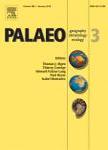版权所有:内蒙古大学图书馆 技术提供:维普资讯• 智图
内蒙古自治区呼和浩特市赛罕区大学西街235号 邮编: 010021

作者机构:Jiangsu Normal Univ Key Lab Reg Sustainable Dev Syst Anal & Simulat Sch Geog Geomat & Planning Higher Educ Inst Xuzhou Peoples R China
出 版 物:《PALAEOGEOGRAPHY PALAEOCLIMATOLOGY PALAEOECOLOGY》 (Palaeogeogr. Palaeoclimatol. Palaeoecol.)
年 卷 期:2025年第666卷
核心收录:
学科分类:0709[理学-地质学] 07[理学] 0708[理学-地球物理学] 0705[理学-地理学]
主 题:Holocene climate variability Hydroclimate reconstruction East Asian monsoon Data-model fusion Atmospheric circulation shifts
摘 要:The pattern of Holocene climate change remains unclear due to unresolved issues such as the temperature conundrum and the uncertain relationship between temperature and precipitation, particularly in monsoonal regions. Variability in regional climate drivers, including changes in ice volume, atmospheric circulation, and monsoon dynamics, further complicates Holocene climate dynamics, leading to spatially and temporally heterogeneous climate responses. As a result, reconstructing the precise timing, magnitude, and drivers of Holocene climate change remains challenging, requiring more detailed data and advanced statistical methods. In this study, we present a quantitative reconstruction of Holocene hydroclimate changes in northeastern China through a data-model fusion approach. By integrating water chemistry data from ostracod shells in a closed-basin lake with a hydrological balance model, we estimate growing-season temperature anomalies and relative lake-level changes during the Holocene. Our results highlight a mid-Holocene hydrological peak corresponding to the Holocene Thermal Maximum in the region. This peak lagged behind the early-Holocene summer insolation maximum, likely due to the influence of remnant ice sheets in the Northern Hemisphere. A comparison of our relative lake-level record with data of regional pollen-based precipitation reconstructions and TraCE-21 k modeling reveals a consistent pattern of increased monsoonal rainfall during the middle Holocene, followed by a steady decline after 5 kyr BP, reflecting a weakening of the East Asian summer monsoon. Additionally, our EOF analyses identify an early-Holocene tripolar precipitation pattern, which reversed in the middle Holocene, driven by shifts in atmospheric circulation. These findings advance our understanding of Holocene climate variability and offer insights for future climate predictions in monsoonal regions.